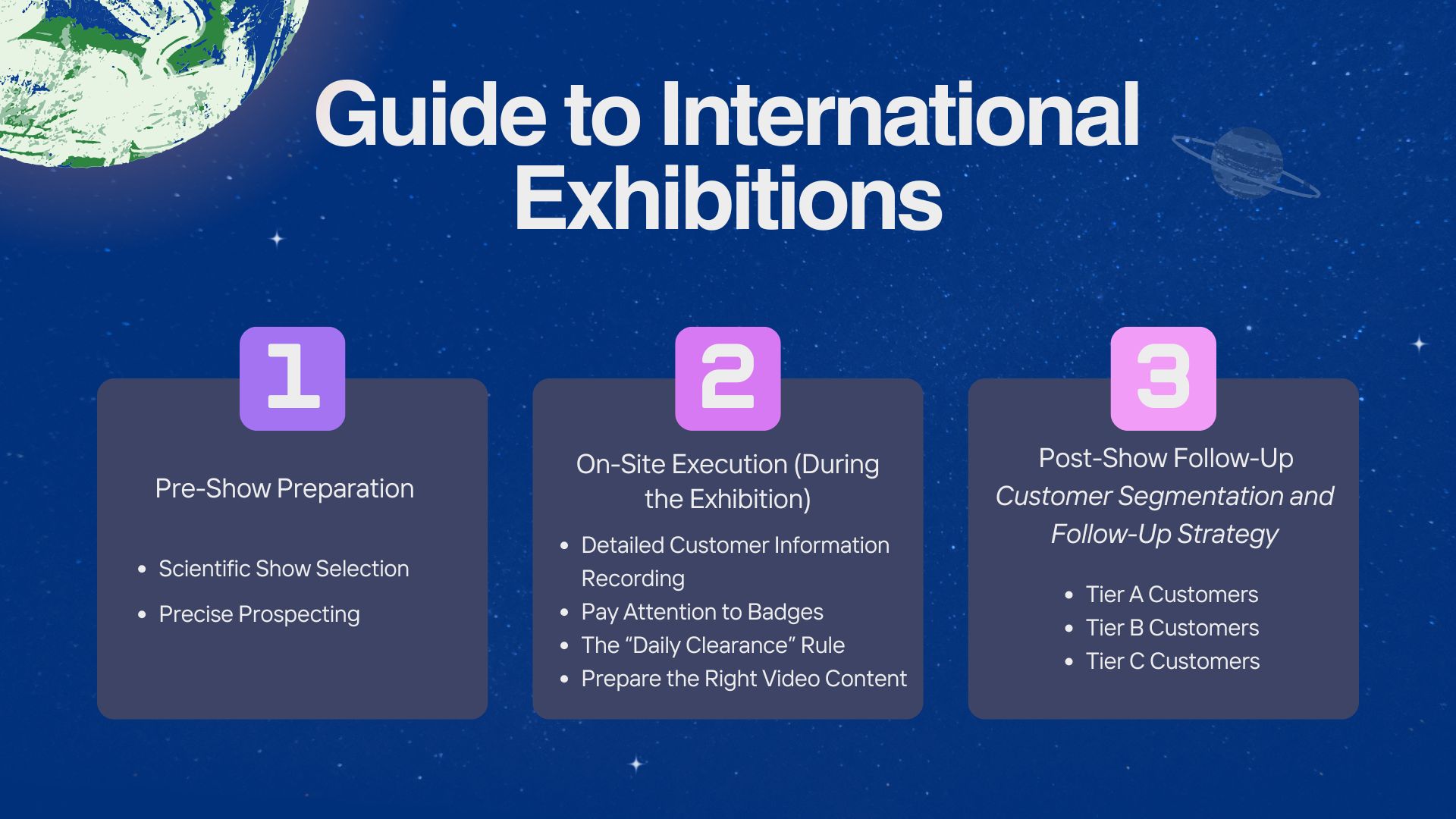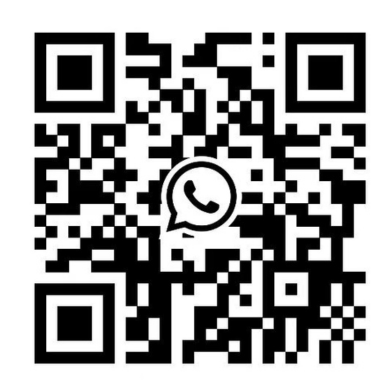For B2B companies, international exhibitions are an indispensable tool for market development. However, participating in a trade show is not merely about “showing up”; it is a campaign that requires meticulous planning and rigorous execution. In this blog, we will break down the key considerations for attending international exhibitions, from pre-show preparation to on-site execution and post-show follow-up.

Phase 1: Pre-Show Preparation (1-2 Months Before)
1. Scientific Show Selection: Data-Driven, Not Blindly Following
Many companies choose exhibitions on a whim: “My competitor is going there, so I should too.” While there’s some logic to this, it’s not the optimal strategy. A scientific exhibition plan should be based on a combination of data analysis Và self-assessment.
- Data Sources: Utilize publicly available customs data or paid data platforms to identify countries with high import volumes of packaging equipment.
- Self-Assessment: Based on your product features, technological level, and budget, select the most advantageous destination.
For example: European countries like Spain and Italy have huge import volumes for thiết bị đóng gói, but their markets are mature and demand high speed and automation. If your máy đóng gói đứng currently runs stably at 80 bags/minute, while the local standard is 100-150 bags/minute, entering the European market blindly may yield little result. In this case, turning to emerging markets like India, Indonesia, or Vietnam, where there is still significant demand for low-to-mid-speed equipment, might be a wiser choice.
2. Precise Prospecting: Invitations Without Preparation are a Waste of Resources
After selecting a market, you must set aside 1-2 months to compile a customer list. This is the cornerstone of the entire exhibition’s success.
•Segment New and Old Customers:
- Existing Customers: Communicate with them in advance, explain your intentions to avoid any misunderstanding of “stealing customers,” and even explore the possibility of co-exhibiting.
- New Customers: Prioritize contacting leads from previous inquiries. At the same time, find new potential customers through various channels (e.g., industry websites, LinkedIn, customs data) and formally invite them to visit your booth or for a post-show visit.
•Create Customer Dossiers: Create a “mini-dossier” for each key customer. It doesn’t need to be long, but it must be precise, including at least:
- Company founding date, number of employees
- Main products
- Current supplier of similar equipment (crucial!)
- Approximate order volume or project cycle
For countries with open data, this information is relatively easy to obtain. For others, you’ll need to rely on “manual” observation and analysis of their websites, social media, and industry news. With a few years of training, we can even roughly identify the brand of equipment from its appearance.
A True Story: I remember at one overseas exhibition, a customer on my list had been unresponsive to my pre-show emails. During the show, he came and visit my booth. I recognized his name and company from his badge, immediately greeted him, and “casually” mentioned the name of his current supplier during our conversation. The look of surprise in his eyes was priceless. “You did your homework on our company?” he asked. I replied, “Of course, you are our valued potential customer.” That look was the moment he remembered me. The subsequent communication became incredibly smooth, and he was willing to give us a chance to solve a pain point that his current supplier couldn’t handle.
This level of preparation is the first step to winning a customer—and earning their respect.
Phase 2: On-Site Execution (During the Exhibition)
1. Detailed Customer Information Recording
I recall a former boss who excelled at this. He required us to use a “Customer Logbook” to meticulously record:
- The customer’s appearance, number of accompanying people.
- Key questions asked and points of interest.
- Securely attach their business card next to the notes.
- If the customer is agreeable, take a photo together (this greatly enhances memory, but always ask for permission first).
2. Pay Attention to Badges
Keep an eye on customers’ badges. Sometimes you’ll find that the company name on the badge is different from the one on their business card. This could mean they have multiple companies or different business entities, which is vital information for understanding their true background.
3. The “Daily Clearance” Rule: Address Inquiries the Same Day
During the exhibition, you must practice “daily clearance.” All customers you receive on a given day must be sent the product information, technical specs, and relevant videos they were interested in via email that same evening.
- Why?: This is when both parties’ memories are freshest. If a customer is genuinely interested, they might return to your booth the next day for further discussion. This allows you to efficiently resolve some issues face-to-face. If you wait until after the show, the customer’s enthusiasm may have waned, or they may have been “intercepted” by a competitor.
4. Prepare the Right Video Content
Please prepare plenty of video materials, but the focus should be on:
- Application Videos: Showcasing the equipment running with different products and packaging materials.
- Customer Case Videos: The most convincing content—your equipment operating in a real customer’s factory.
- Troubleshooting Videos: Solutions for common faults or operational challenges.
Many companies only prepare a polished corporate introduction video, but customers are not very interested in this. They want to see how your equipment can actually solve their problems.
Phase 3: Post-Show Follow-Up (1-2 Weeks After)
Customer Segmentation and Follow-Up Strategy
After the show, you need to quickly categorize the leads you’ve collected and adopt different follow-up strategies:
- Tier A Customers: Expressed clear interest and discussed specific projects. These are high-priority leads. Immediately provide detailed proposals and quotes, and actively seek opportunities for on-site visits.
- Tier B Customers: Business is relevant, but they were not overly enthusiastic, possibly just gathering initial information. Treat them as “backup” leads. Keep in touch by periodically sending company news, technical articles, and success stories, and wait for the right moment.
- Tier C Customers: Business is irrelevant or they explicitly stated they are not interested. You can archive these directly without wasting too much effort.
Safety First.
Finally, a special reminder: when participating in international exhibitions, always prioritize safety.
- Research the security situation of the destination country in advance.
- Save the contact information of the local Chinese embassy.
- Comply with local laws, regulations, and customs.
What are your unique strategies for attending international exhibitions? Share them in the comments below.


